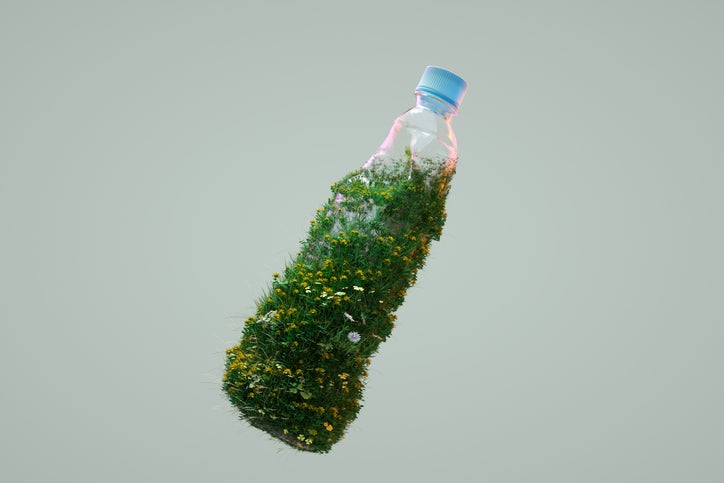
Companies in the plastic packaging sector across Europe and the US are making environmental protection pledges and governments are presenting regulations on managing plastic waste and recycling.
According to research by financial services company Rabobank’s Food and Agribusiness division, a large amount of waste never reaches recycling plants, ending up in landfills or incineration plants for energy recovery, despite these efforts.
Rabobank Europe plastic packaging analyst Regina Mestre explains: “In the US, an average of 13.3% of plastic packaging waste was recycled in 2021 while in the EU, an average of 38% of plastic packaging waste was recycled in 2020.”
This lack of investment brings into question whether sustainable plastic alternatives are worth the higher costs, loss of efficiency and reduced shelf life if they have little chance of being recycled.
More than 500 of the most influential organisations globally have committed to roughly the same goals adopted from the Ellen MacArthur Foundation’s vision for a circular economy.
The bottom line: “By 2025, 100% of packaging should be recyclable, compostable, or reusable.” This includes Carbios, Sidel and PepsiCo.

US Tariffs are shifting - will you react or anticipate?
Don’t let policy changes catch you off guard. Stay proactive with real-time data and expert analysis.
By GlobalDataSome companies have also set their own goals. But 2025 is less than two years away, and in order to meet those goals, the report states that serious investment is needed now.
Packaging producers need to start investing and trialling now
According to Rabobank plastic packaging senior analyst for north america Jim Owen, some of the investments and trials that packaging producers need to start working on now in order to prepare for the (near) future include:
- Having well-funded R&D departments that can articulate all the trade-offs, specify material and equipment needs, and begin understanding the implications for shelf life.
- Establishing partnerships with recyclers and resin processors and investing in recycling (both advanced and mechanical) to ensure one’s own steady stream of recyclates.
- Educating consumers on packaging and adhering to How2Recycle guidelines in order to achieve higher recycling rates and greater access to recycled content.
- Discontinuing investment in outdated materials, working toward simplification with attention to end-of-life value.
- Being a part of extended producer responsibility (EPR) bill formation.
What can be done to improve packaging recycling rates?
The report asserts that a series of actions from different industry players are necessary to increase the amount of waste that is recycled. Some of these changes include:
- Improving collection infrastructure and promoting separate collection streams to ensure cleanliness, and streamlining waste toward recyclers.
- Designing for recycling, making sure packaging is easy to recycle following guidelines, including but not limited to the use of light colours and increasing monomaterial packaging.
- Designing for correct collection to increase the likelihood of correct disposal, including harmonising labels between packaging and waste containers and decreasing the use of small parts or tethering them.
The high price of recyclates compared to their virgin counterparts has led to low recycled material content in packaging.
The report finds that increasing the recycling rates and availability of recyclates is likely to help make recyclates more affordable for packaging producers. This, alongside regulatory changes, should increase the use of recycled content in packaging.
Ultimately, collaboration is essential between businesses, institutions and governments to put environmental pledges into action and avoid extending sustainability goals to faraway decades that the planet cannot spare.



